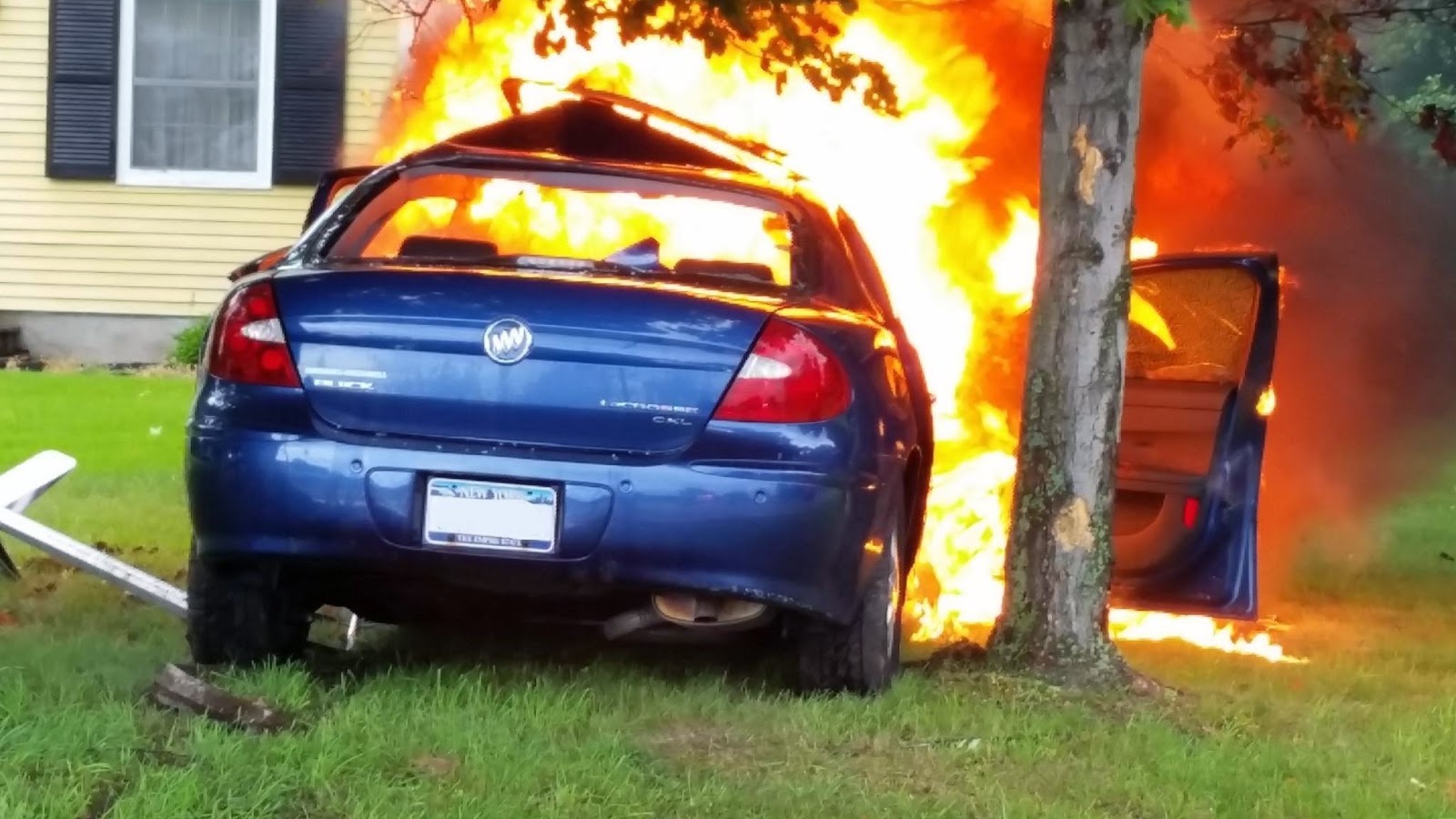Seeing isn't believing anymore
Photojournalists have been fired for altering news photos. Public relations people disseminate art-directed, staged, or Photoshopped publicity photos. Somewhere in-between: crowdsourced photos used online by news media. Local TV and newspaper staffs are pretty lean, so they solicit photos from viewers and readers.
Asking readers and viewers to send photos is a handy way to engage your audience but there's risk involved. A scheming news junkie with a smartphone could contrive an image, although most editors are wise enough to spot a faked photo.
 But what happens when a news outlet alters a submitted news photo for no apparent reason?
But what happens when a news outlet alters a submitted news photo for no apparent reason?
Look carefully at these two images, posted by two competing TV news outlets on their websites. Both show a burning car, from which the driver was rescued. A closer look reveals a subtle alteration between the two shots.
For unexplained reasons, the first news outlet omitted the license plate numbers. The second news channel ran the photo without the edit.
Why is this a big deal?
"Channel 1" enjoys a well-deserved reputation for its fine news coverage. It has experienced on-air journalists who are almost uniformly trusted for accuracy.
Posting altered images places the station's reputation in doubt. Curiously, they haven't done this with consistency; earlier submitted photos of accidents show the plate numbers of wrecked cars.
It's one thing to pixelate an image or video segment to hide a whistle-blower's identity, or obscure offensive language or gestures. The license plate number isn't offensive.
Do we chalk this one up to an over-cautious intern? Over-zealous editing?
Personally, I bristle at needlessly adulterated images. It's a practice that falsifies reality. We hardly notice the too-skinny women in over-edited shots of fashion models. And we routinely filter a digital image with Instagram or Photoshop before posting, in the name of fun and Facebook.
But news editors should draw the line, and resist editing photos just because they can.
We shouldn't whitewash reality from photos, unless there's a real risk to the safety of someone in the shot. Just as PR people need to earn the trust of media gatekeepers, readers and viewers should be able to believe in what they see on news sites. Because that's where most news media are ultimately headed.
Asking readers and viewers to send photos is a handy way to engage your audience but there's risk involved. A scheming news junkie with a smartphone could contrive an image, although most editors are wise enough to spot a faked photo.
 But what happens when a news outlet alters a submitted news photo for no apparent reason?
But what happens when a news outlet alters a submitted news photo for no apparent reason?Look carefully at these two images, posted by two competing TV news outlets on their websites. Both show a burning car, from which the driver was rescued. A closer look reveals a subtle alteration between the two shots.
For unexplained reasons, the first news outlet omitted the license plate numbers. The second news channel ran the photo without the edit.
Why is this a big deal?
"Channel 1" enjoys a well-deserved reputation for its fine news coverage. It has experienced on-air journalists who are almost uniformly trusted for accuracy.
Posting altered images places the station's reputation in doubt. Curiously, they haven't done this with consistency; earlier submitted photos of accidents show the plate numbers of wrecked cars.
It's one thing to pixelate an image or video segment to hide a whistle-blower's identity, or obscure offensive language or gestures. The license plate number isn't offensive.
Do we chalk this one up to an over-cautious intern? Over-zealous editing?
Personally, I bristle at needlessly adulterated images. It's a practice that falsifies reality. We hardly notice the too-skinny women in over-edited shots of fashion models. And we routinely filter a digital image with Instagram or Photoshop before posting, in the name of fun and Facebook.
But news editors should draw the line, and resist editing photos just because they can.
We shouldn't whitewash reality from photos, unless there's a real risk to the safety of someone in the shot. Just as PR people need to earn the trust of media gatekeepers, readers and viewers should be able to believe in what they see on news sites. Because that's where most news media are ultimately headed.
